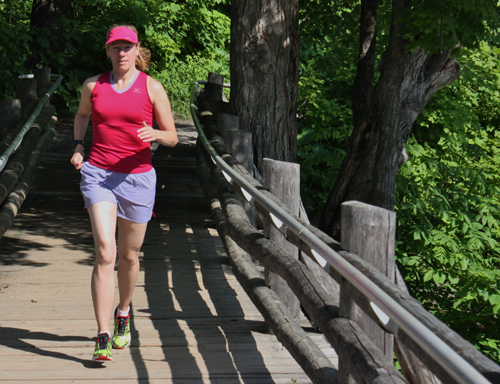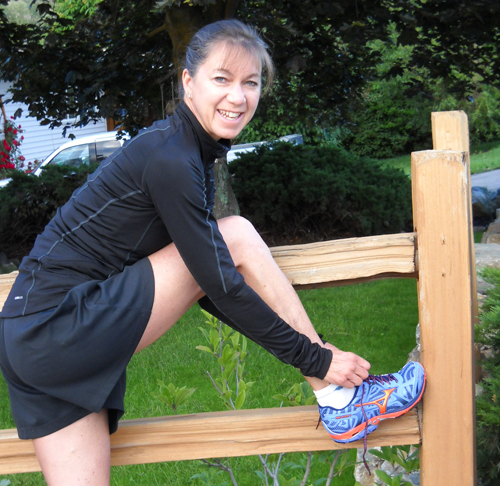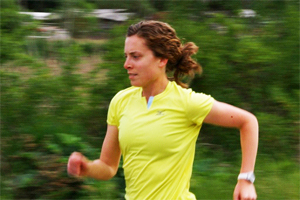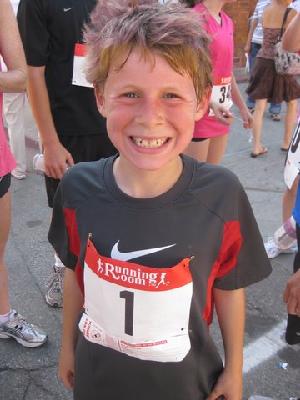
By: Karen Karnis
Andrea Moritz is raising funds for Love4Gambia, a Nova Scotia-based charity that runs educational programming for HIV/AIDS and malaria prevention, landmine injury prevention and child rights promotion in The Gambia, West Africa.
Silent auction and benefit? Check. Run the Blue Nose Marathon and collect pledges for the Love4Gambia team? Check. Run 424km across The Gambia in temperatures around 40 degrees Celsius and 100 per cent humidity over a period of two weeks? Wait, what?
That’s right, beginning June 25, Moritz will set out from the eastern end of The Gambia and cover approximately 30km per day to reach the West Coast in two weeks. She could run higher mileage days and be done more quickly, but Moritz decided to take her time so she could visit schools along the way and meet the kids who are benefiting from Love4Gambia’s programming.
When asked how she became involved, Moritz, who lives in Ottawa, said that she used to live in Halifax so she knows people there. “They were looking for a runner for this year’s expedition. Since I am Africa-crazy and like to run long distances, I guess my name came up,” she laughs. She once spent five weeks touring on her own in Africa, where she met and chatted with everyday people, and just found everyone to be so friendly and welcoming.
“They have this concept in Africa called Ubuntu,” explains Moritz. “It’s about being connected and helping others because it is the right thing to do, not because it might pay off for you in the future. It’s in this spirit that I wanted to do this run – it’s a chance to give back to these wonderful people.”
Moritz is no stranger to running in Africa, having run the Comrades Marathon – a 90km ultra marathon in South Africa – three times, not to mention all of the running she did during her 5-week trip. This will be her first trip to West Africa, however.
She’s taking 6 pairs of shoes, generously donated by Mizuno – five pairs of Wave Ronins and a pair of Wave Mushas – because they don’t dry well in the humidity, and short, torrential downpours are typical for this time of year. Not only that, she expects to melt the soles of a few pairs during asphalt portions of her run. “We know the Musha can withstand that heat because they had them last year. This will be like a test for the Ronin,” laughs Moritz. “It’s some field testing for Mizuno!” Moritz will also take about 28 pairs of socks because she expects to need to change them fairly frequently.
When it comes to what to wear, here at home Moritz typically runs in shorts and a bra top in hot weather, but she’ll be experimenting with some Mizuno apparel on the trek. “They’ve given me some really lightweight shirts that feel great, and they’ll provide extra sun protection,” says Moritz. She’ll also have several hats, visors and Buffs on hand, as well as plenty of sunscreen with an SPF of 45.
She will be accompanied by a crew of three Gambians – two who work for Love4Gambia, and a third who is a friend of the others and wanted to help out. “They’re my logistical magicians,” says Moritz – they will ensure she has food and water, accommodation, set up the school visits, and run parts of the course with her.
So far, says Moritz, they’ve raised $12,000 through the run. She hopes that her campaign will gain a little more momentum as her departure draws near.
Moritz acknowledges that there are so many worthy causes out there, so when asked why donors should support Love4Gambia, she says, “The Gambia has an AIDS infection rate that is seven times what we have in Canada. The child mortality rate in Canada is 16 per year, as opposed to over a thousand there. But what’s so tragic is that all of these things are preventable.”
The money goes directly to programs that will open up a dialogue on such taboo topics as sex education, teen pregnancy, physical and sexual abuse, female genital mutilation, forced marriage and child rights. It also educates people on things as simple as the symptoms of Malaria. Since Malaria starts out similar to the flu, people just wait for it to go away; by the time they realize it is more serious, it is too late for medical interventions to save them.
Moritz also advises that each dollar goes a long way. “The $12,000 raised to date could teach up to 800 peer educators who will each then reach hundreds of other kids,” she says. “Workshops delivered directly in schools cost about $350 per school, so with 500 to 700 students in each school, the $12,000 would reach more than 20,500 students with these important messages.” Over time, of course, it is hoped that the messages will become more ingrained in society as a whole, as kids talk to other kids, including siblings and friends, then eventually, their own children, so that over time, the impact could literally change the country.
If you want to learn more, visit Love4Gambia’s website. To donate to Moritz’s run, visit her donation page, and under Fund/Designation, select Andrea Moritz’s Run – donations over $20 qualify for a tax receipt.
Follow Andrea’s trek on her Love4Gambia blog, the Love4Gambia Facebook page and on Twitter @Love4Gambia2012!





 Nikki Reiter holds a master’s degree in biomechanics and is a Mizuno Running Brand Ambassador and the Women’s Cross Country Running Head Coach at the University of British Columbia Okanagan campus in Kelowna, BC. She is also the Laboratory Coordinator in the School of Health and Exercise Sciences at UBC Okanagan where she facilitates undergraduate laboratory learning.
Nikki Reiter holds a master’s degree in biomechanics and is a Mizuno Running Brand Ambassador and the Women’s Cross Country Running Head Coach at the University of British Columbia Okanagan campus in Kelowna, BC. She is also the Laboratory Coordinator in the School of Health and Exercise Sciences at UBC Okanagan where she facilitates undergraduate laboratory learning.
 When Cole Grossman is not excelling at hockey, this 10 year old boy from Toronto who has discovered a new passion, is running. Cole and his father Ira were nice enough to share Cole’s story with us.
When Cole Grossman is not excelling at hockey, this 10 year old boy from Toronto who has discovered a new passion, is running. Cole and his father Ira were nice enough to share Cole’s story with us. Our Magazine
Our Magazine Previous Release
Previous Release
